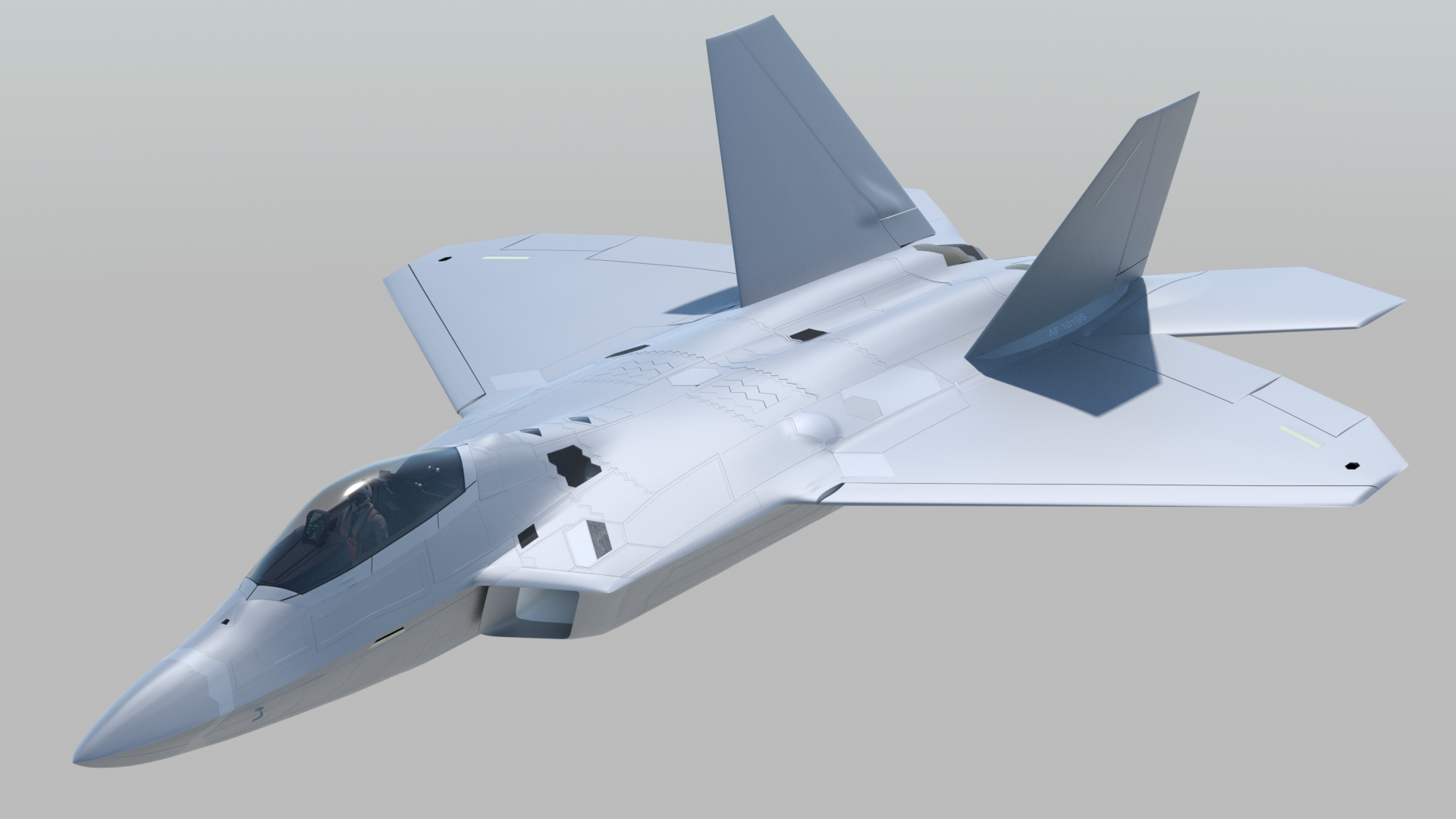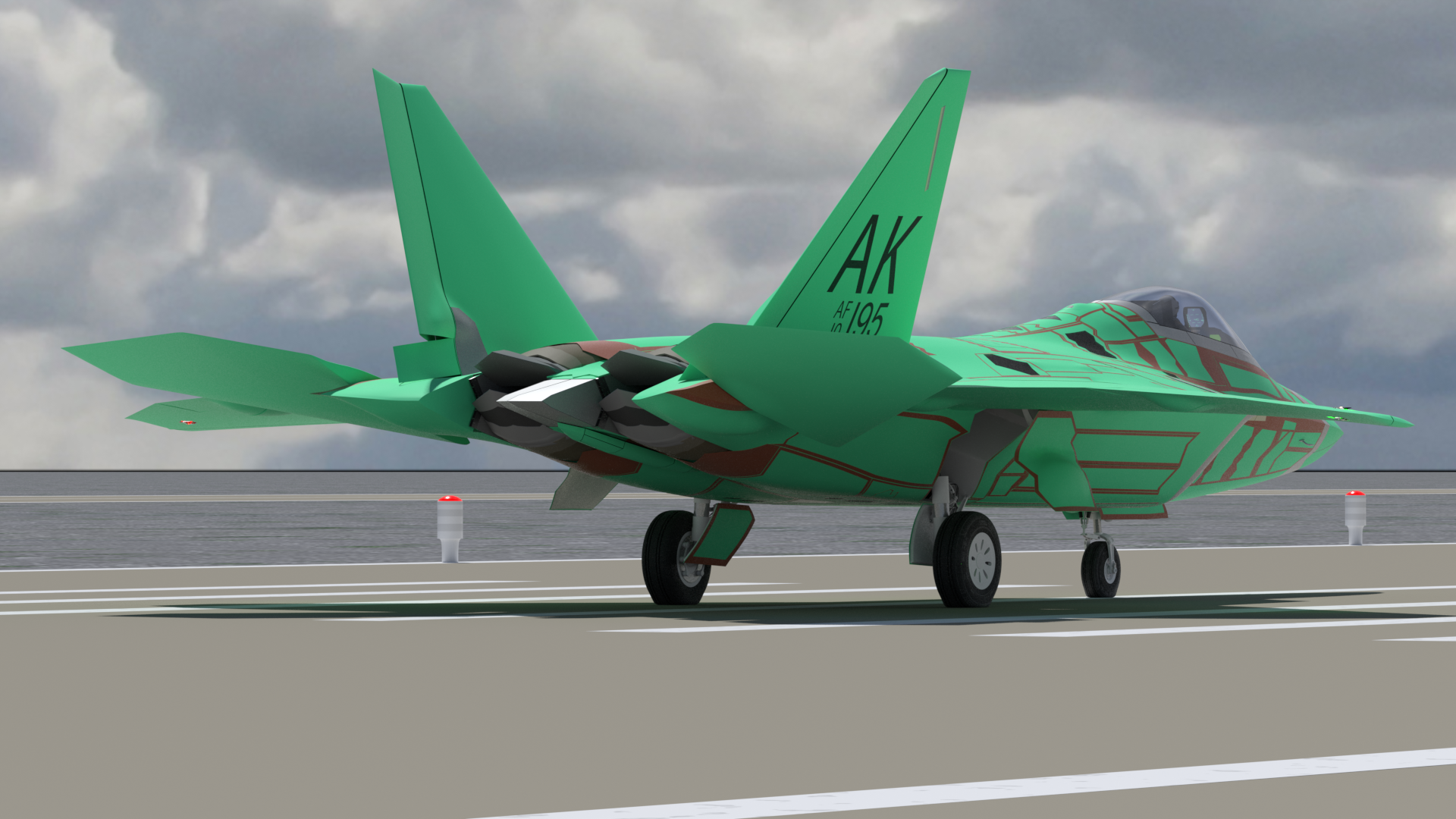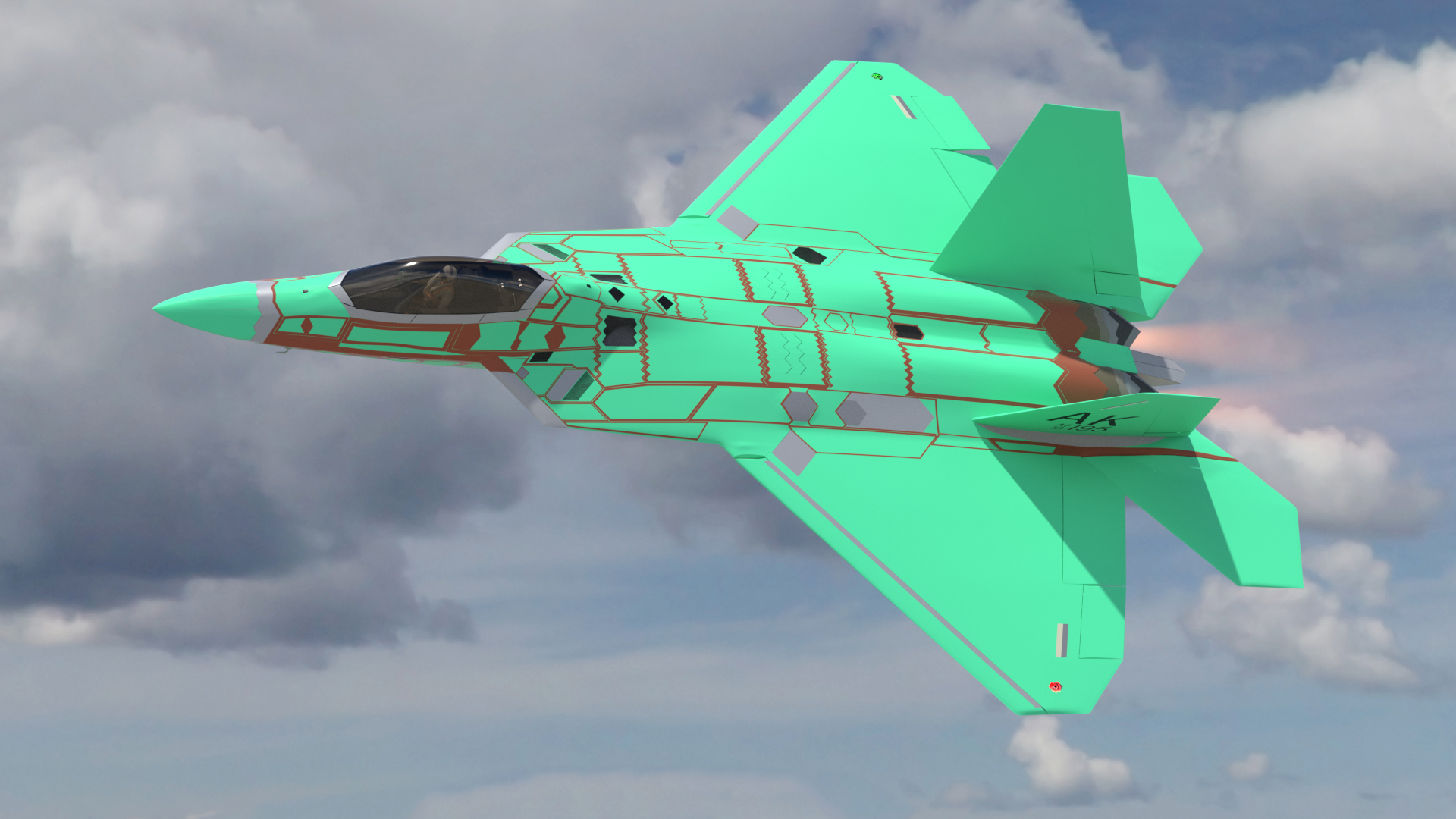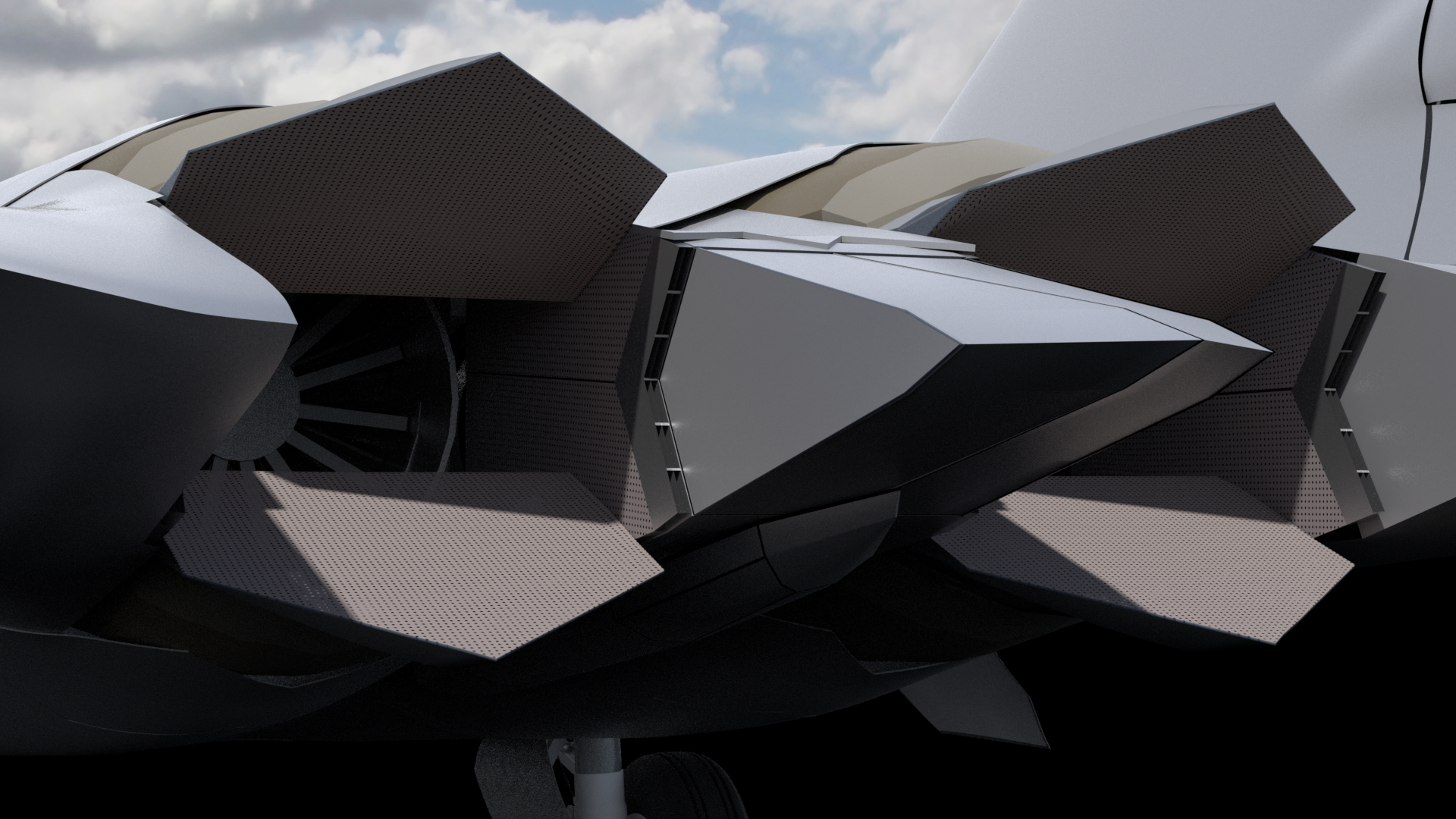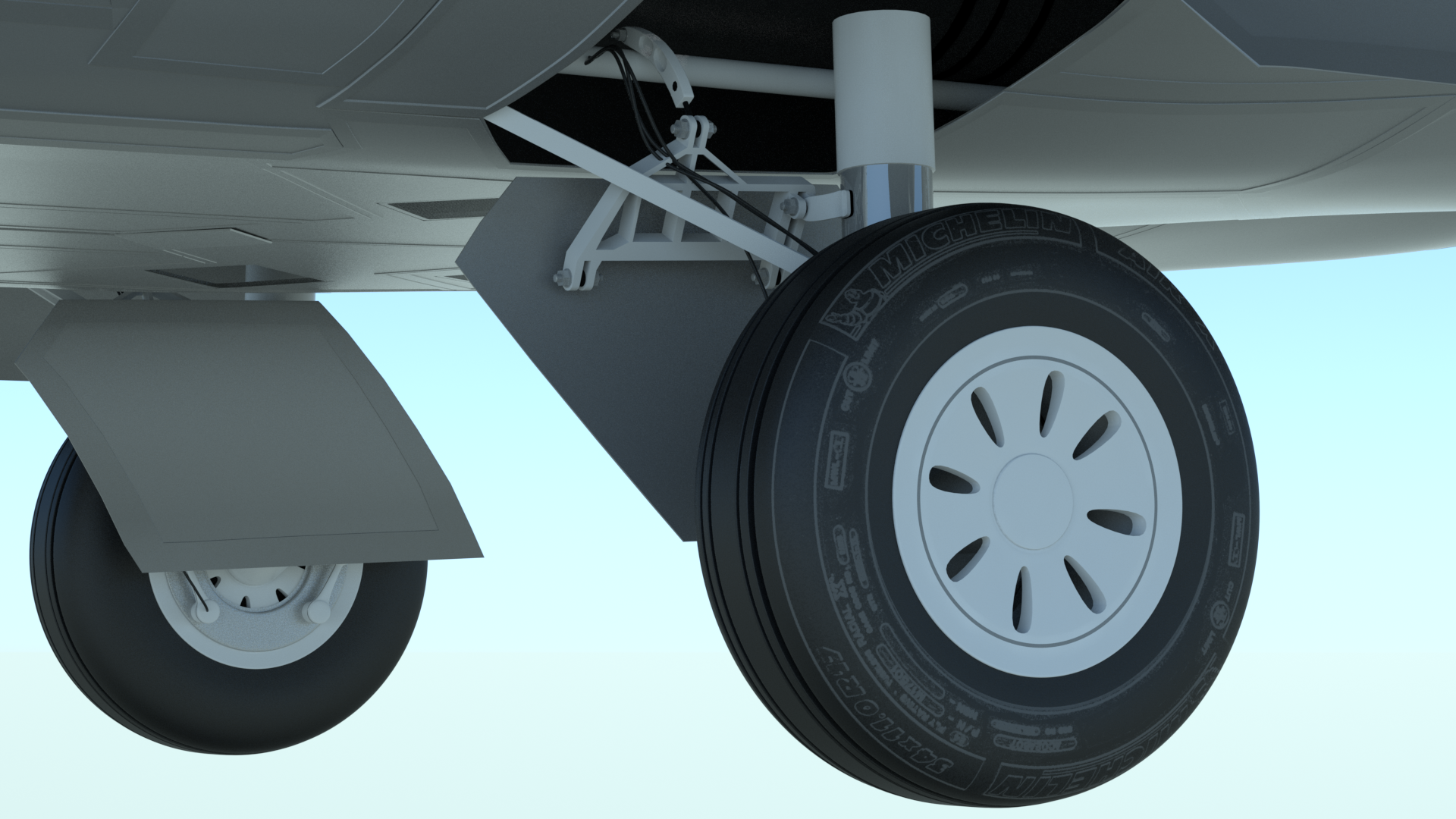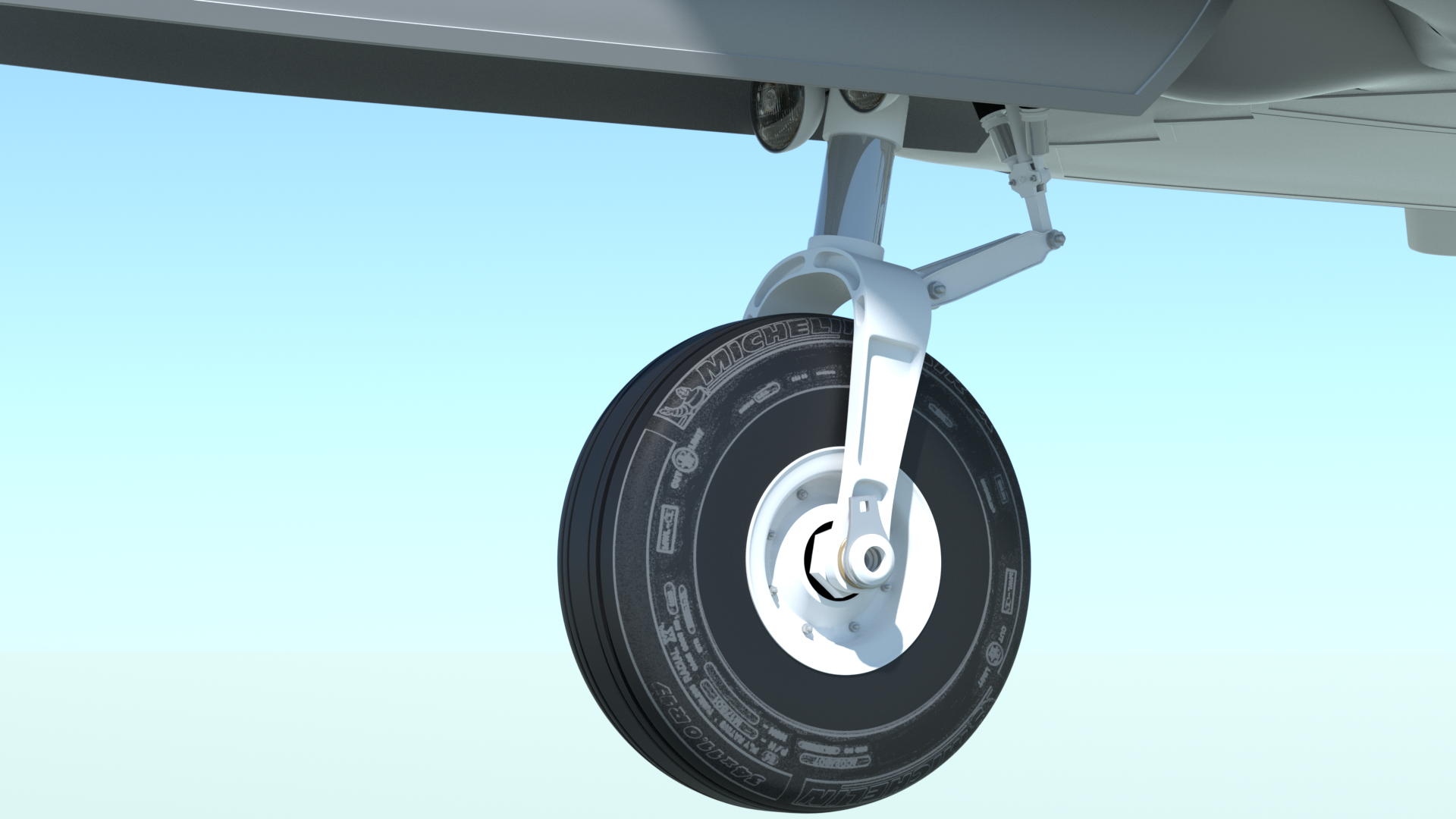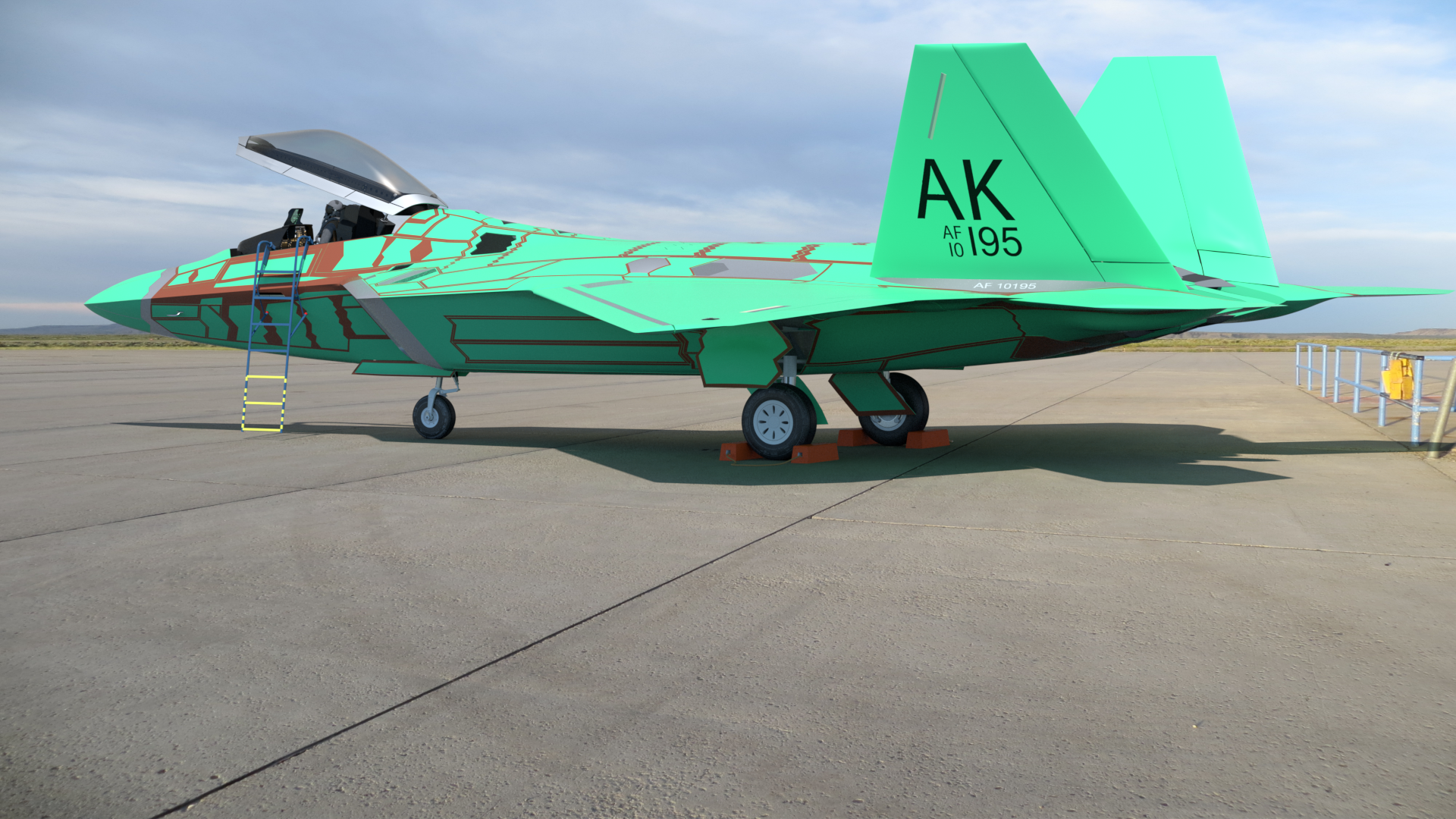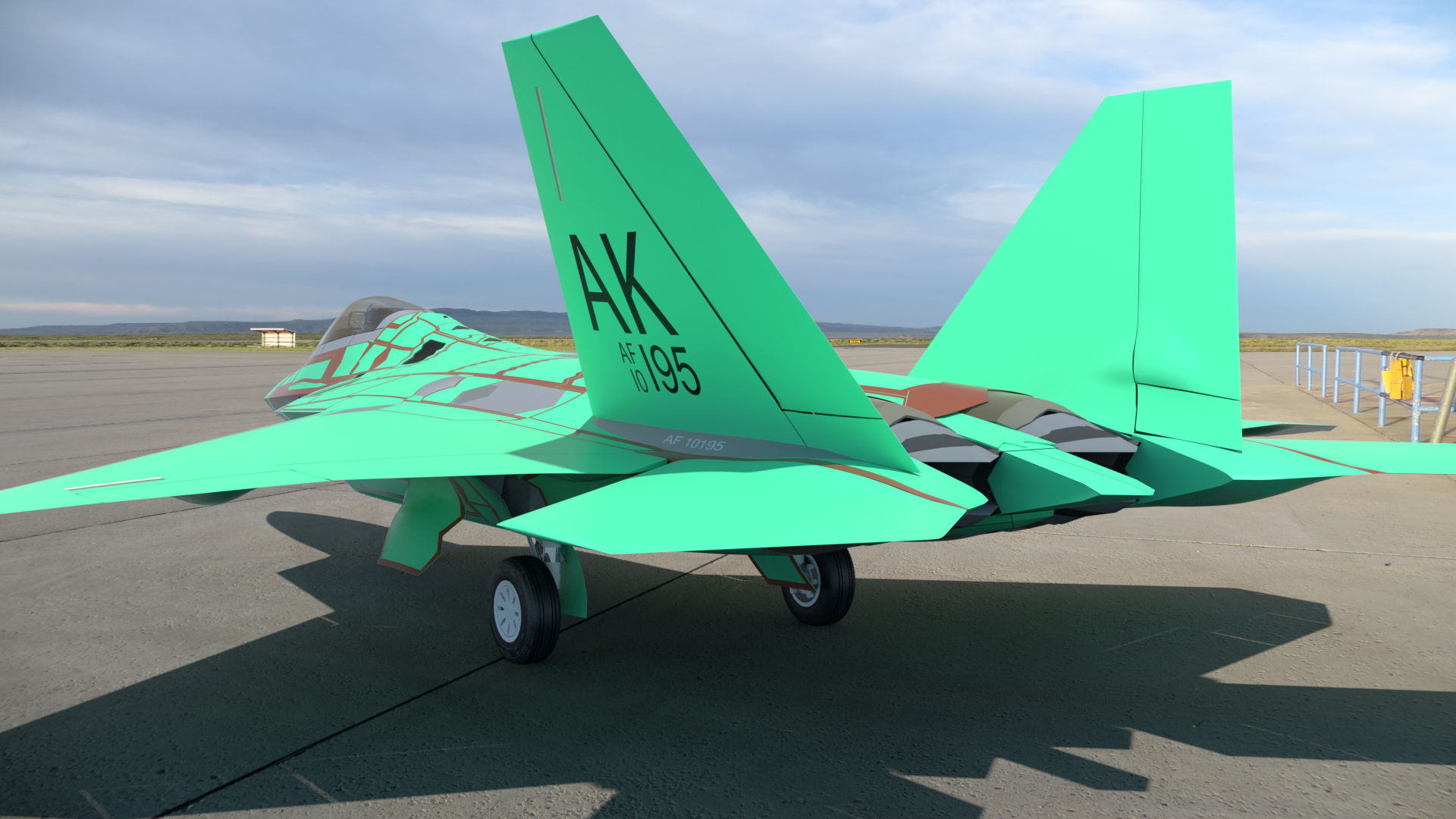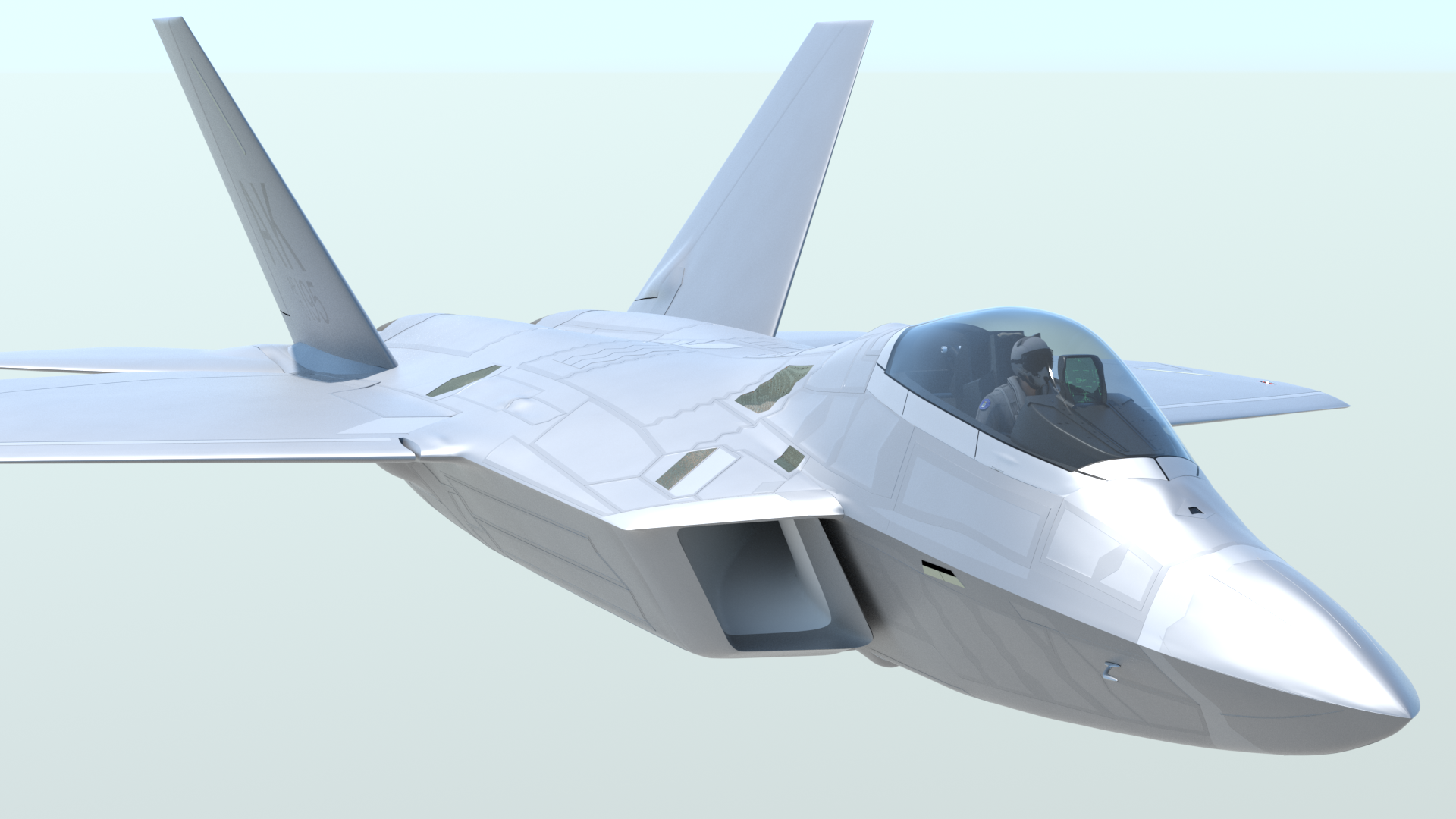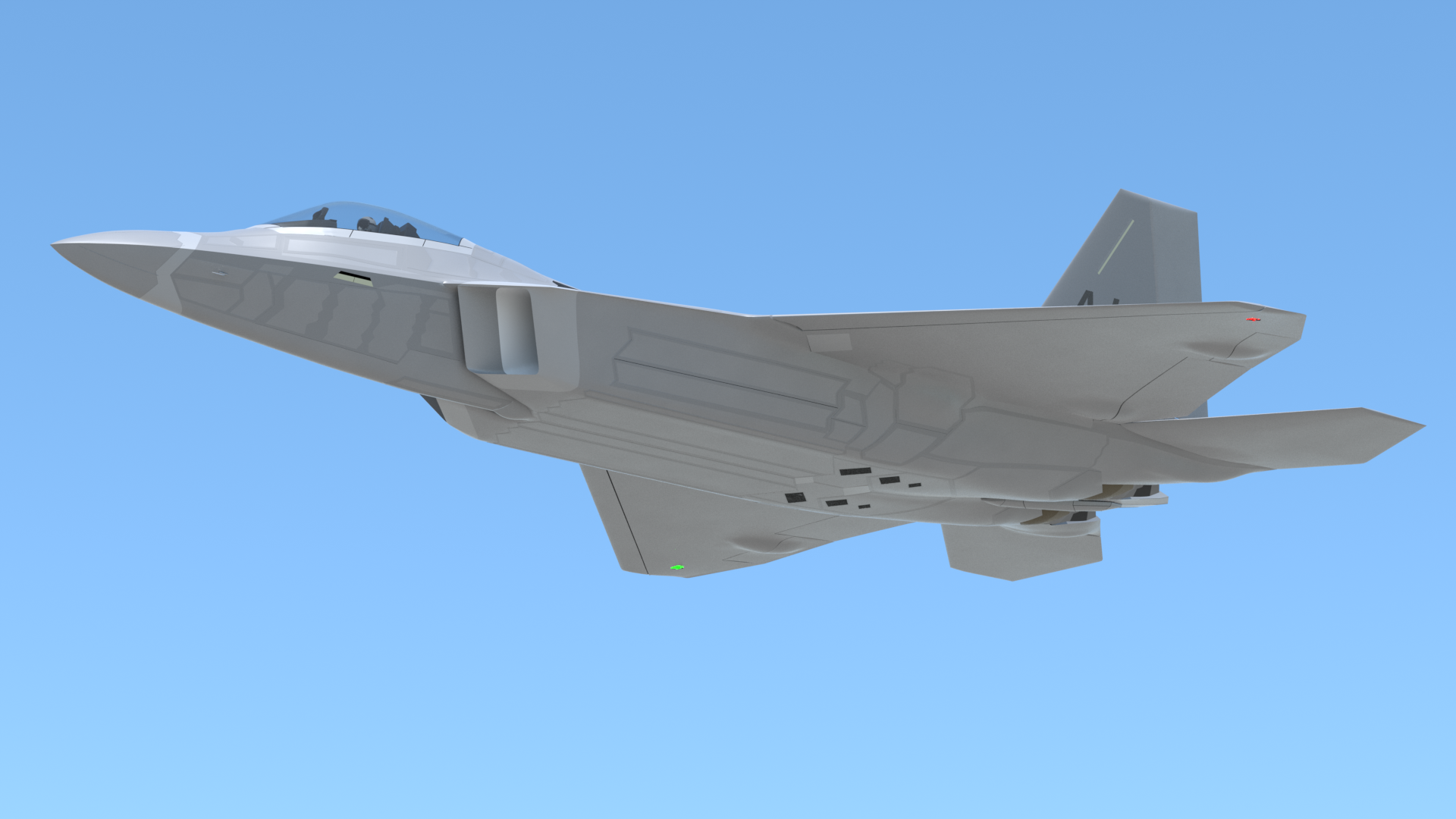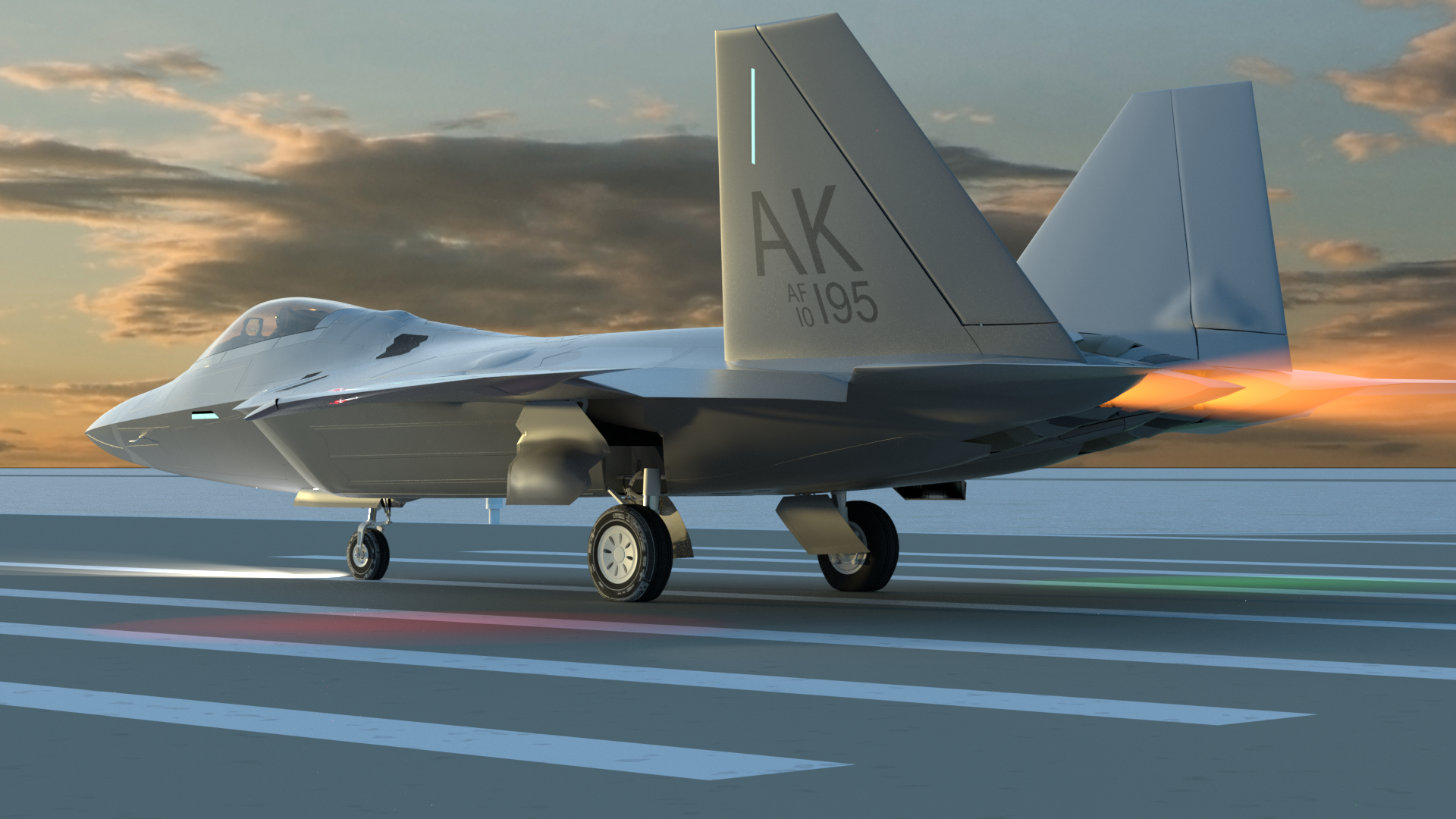Lockheed Martin F-22 "Raptor"
 After seeing the F-22 demo here in Anchorage, in 2008, (Major Max Moga) I decided to finally take the plunge and model this difficult project. I collected all the documentation I could, and having rebuilt the aircraft three times now, over the years, I believe that my current (2015) version is one of the more accurate and full-rigged models you'll find of the F-22 "Raptor". This project is still ongoing, as I refine details and add new ones. The follow-along construction article is here.
After seeing the F-22 demo here in Anchorage, in 2008, (Major Max Moga) I decided to finally take the plunge and model this difficult project. I collected all the documentation I could, and having rebuilt the aircraft three times now, over the years, I believe that my current (2015) version is one of the more accurate and full-rigged models you'll find of the F-22 "Raptor". This project is still ongoing, as I refine details and add new ones. The follow-along construction article is here.
As with most other preview pages, the images here are larger than what's displayed. If you drag them to your desktop, you can view the large version. (typically 2400 pixels wide)
The 2015 model:
Model Features:
Geometry and Markings:
- Exterior geometry was based on Lockheed Martin drawings, as well as hundreds of photos. These include quite a number of photos taken by me here in Anchorage, where we have a squadron of Raptors.
- Markings emulate basic ("factory" and non-camo) versions of the Anchorage "Arctic Warriors" commander's aircraft. NOTE: Due to the unusual layered approach I used on the external markings, these may not transfer to file formats other than .lxo.
- All visible panel lines are actual geometry, not texture maps
- Moderately-detailed cockpit - Includes upper panel features seen in the images below, but not the joysticks and rudder pedal details
- Weapons bay openings and doors are modeled, but no interior details or weapons
- Moderately-detailed under-wing fuel tanks are included. (Just turn them off when not in use.)
- Landing gear bays are modeled as shown, but not detailed.
- The boarding ladder is supplied as shown. In MODO, closing the canopy automatically makes the boarding ladder disappear in renders, using the "Dissolve" function. (just in case you forget to turn it off)
- Interior ducts, basic engine housings, aft turbine blades, and diffusers are included.
- Lighting system includes two lights within the aft engine compartment, which can be used with a volumetric exhaust cloud, for the "afterburner" effect. (shown without volumetrics in the night-time image below) Volumetric item can be used with or without the lights for a daytime exhaust trail, as shown in another one of the images below.
Animated Features:
In MODO, two pop-up (slider) controllers are exposed, with one being for the flight controls and lighting, and the other being for the weapons bay doors. These animated features may not transfer properly to other file formats, although their centers (pivots points) should transfer, enabling you to rig the model in other applications, if needed.
- Several automated features exist, when used in the lxo format. These include a lockout of the thrust vectoring while taxiing above 20 knots, and in the air, while the landing gear is down. There is also a feature that reduces the amount of control surface deflection on all surfaces, according to the aircraft speed. (A speed readout in knots is included.)
- Opening and closing canopy - The canopy jackscrew turns, and it's associated parts move realistically.
- Retractable landing gear with sequencing gear doors, as shown above
- Nose gear is steerable when the gear is down.
- Cockpit includes a switchable lighting system
- Thrust-vectoring nozzles are moveable, separately from the other flight controls.
- Rigged control surfaces include the leading edge flaps, trailing edge flaps, ailerons, tailerons, and rudders. The ailerons, flaps, and rudders are not linked, left-to-right, so that if you like, you can animate them as on the actual aircraft, for the various flight modes.
- Each set of weapons bay doors (left, right, bottom) are on their own controller, so they can be operated separately.
- Wheels are rigged to roll when the aircraft moves. Tires compress realistically and oleos compress realistically when on the ground, and react properly during a takeoff or landing sequence.
- External lighting includes separate controllers for the position lights on the wings, landing light, taxi light, and electroluminescent strips on the wings, tail and vertical fins.
- Separate controllers operate the APU intake and exhaust doors, and air refueling door.
- There is a controller to turn the pilot's head left and right.
Details...

